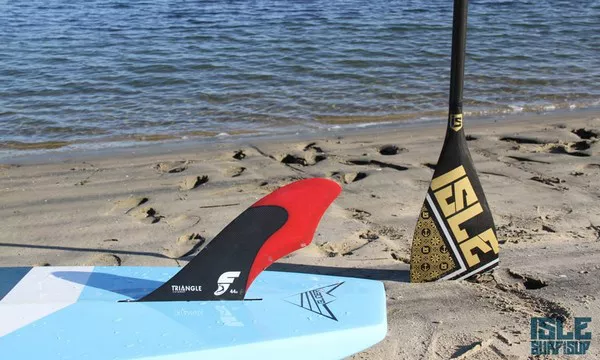When gliding across the serene waters on a paddle board, the subtle movements beneath the surface often go unnoticed. Yet, beneath the tranquility lies a critical component that significantly influences your paddling experience – the fins. These seemingly small appendages play a crucial role in stability, maneuverability, and overall performance. In this comprehensive guide, we delve deep into the dynamics of fins on a paddle board, unraveling their mysteries and shedding light on their significance.
The Anatomy of Fins: A Closer Look
Before we delve into their functionality, it’s essential to understand the anatomy of fins. Typically constructed from durable materials such as plastic, fiberglass, or carbon fiber, fins are attached to the underside of a paddle board. They come in various shapes and sizes, each designed to serve a specific purpose.
The most common types of fins include:
1. Center Fin: Positioned at the center of the board, this fin provides primary stability and helps maintain a straight trajectory while paddling.
2. Side Fins (or “Side Bites”): These fins are located on either side of the center fin and contribute to lateral stability, preventing the board from sliding sideways.
3. Rear Fin (or “Trailing Fin”): Situated at the back of the board, the rear fin enhances tracking and maneuverability, particularly during turns.
Now that we’ve familiarized ourselves with the basic anatomy, let’s explore the multifaceted roles fins play in optimizing your paddle boarding experience.
Enhancing Stability: Finding Your Balance
One of the fundamental functions of fins is to enhance stability on the water. As you stand atop a paddle board, your body weight inevitably creates a dynamic equilibrium, with the board constantly adjusting to maintain balance. Fins serve as stabilizers, counteracting lateral forces and minimizing the risk of capsizing.
The center fin, in particular, plays a pivotal role in stabilizing the board along its longitudinal axis. By extending into the water below, it creates resistance against sideways motion, allowing you to maintain a straight course even in the presence of currents or choppy waters. This stability is essential for beginners learning to paddle board, providing a solid foundation for mastering basic techniques.
Moreover, side fins contribute to lateral stability, preventing the board from tipping over when subjected to uneven weight distribution or external forces. Their presence ensures that the board remains upright, enhancing confidence and control for paddlers of all skill levels.
Optimizing Maneuverability: Navigating with Precision
While stability is paramount, maneuverability is equally crucial, especially for those seeking to explore different water environments or engage in more dynamic activities such as surfing or whitewater paddling. Fins play a pivotal role in fine-tuning the responsiveness and agility of your paddle board, enabling precise navigation and fluid transitions between strokes.
The rear fin, also known as the trailing fin, is instrumental in optimizing maneuverability. Positioned at the tail end of the board, it acts as a rudder, exerting leverage and control over the direction of movement. During turns, the rear fin digs into the water, generating resistance that enables you to pivot with precision while maintaining stability. This capability is particularly evident in surfing, where quick, decisive turns are essential for riding waves and navigating through turbulent surf.
Moreover, the configuration and placement of fins can be adjusted to tailor the board’s performance to specific paddling styles and environmental conditions. For instance, removing the center fin or opting for smaller side fins can increase maneuverability, allowing for sharper turns and agile maneuvers. Conversely, adding larger fins enhances tracking and stability, ideal for long-distance paddling or traversing open water.
Improving Tracking: Staying on Course
Tracking refers to the ability of a paddle board to maintain a straight trajectory without veering off course. Efficient tracking is essential for conserving energy and maintaining forward momentum, especially during extended paddling sessions or when navigating through narrow channels or crowded waterways.
Fins play a crucial role in improving tracking by minimizing lateral drift and resistance. The center fin, in particular, acts as a keel, piercing through the water and providing directional stability. By channeling water flow and reducing side-to-side motion, the center fin ensures that the board maintains a consistent heading, even in the presence of crosswinds or currents.
Additionally, the interaction between the center fin and side fins influences the overall tracking performance of the paddle board. A balanced configuration, with properly aligned fins, promotes straight-line paddling and reduces the need for constant course corrections. This stability is invaluable for paddlers undertaking long-distance journeys or navigating through challenging terrain, where maintaining a steady course is paramount.
Conclusion
In conclusion, fins are not merely accessories but indispensable components that shape the dynamics of paddle boarding. From enhancing stability and maneuverability to improving tracking and control, fins play a multifaceted role in optimizing performance and elevating the paddling experience.
Whether you’re gliding across tranquil lakes, riding waves along the coast, or exploring winding rivers, understanding the function of fins is essential for unlocking the full potential of your paddle board. By harnessing the power of fins and mastering their nuances, you can embark on a journey of exploration, adventure, and self-discovery on the shimmering waters that beckon beneath the sun.

